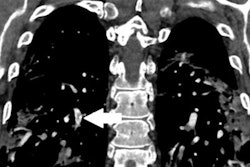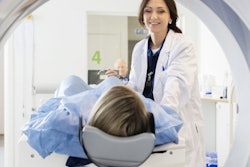
A hospital-wide quality improvement project effectively lowered CT radiation dose by nearly 20%, report researchers from Seattle. They detailed how three initiatives enabled them to achieve this dose reduction in an article published online May 21 in the Journal of the American College of Radiology.
The inexorable growth of CT use -- especially in hospital emergency departments -- has reinforced concerns over the potential risks of excessive radiation exposure from medical imaging. To allay these concerns, numerous medical institutions have implemented a variety of measures geared toward lowering radiation dose, from developing low-dose CT protocols and modifying scanning parameters to applying noise reduction techniques.
Researchers at Virginia Mason Medical Center in Seattle, part of a healthcare network in the Pacific Northwest that oversees roughly 260,000 radiology exams per year, recognized that the average radiation dose for their CT exams remained higher than the national average even after implementing many of these measures. In response, Dr. Philip Smith and colleagues from the institution launched a quality improvement project to reduce CT dose throughout the network.
For the project, the group evaluated 21,802 chest, abdomen, and pelvis CT scans and CT pulmonary angiograms (CTPA) acquired from January 2015 to October 2017. After analyzing the data and discussing the information with radiologists and CT technologists, the researchers pinpointed three areas for improvement and then developed the following initiatives to address each one:
- Promote the use of low-dose CT protocols. Although the institution had already implemented low-dose CT protocols in 2010, clinicians were still choosing not to use them in almost 20% of cases. To promote greater use of these protocols, the group discussed their findings with attending radiologists and had the section head send out an email reminding clinicians of the importance of dose reduction. The group did the same for the oncology department since many of its providers were ordering full-dose CT exams -- against radiologist recommendations.
- Implement a size-specific protocol for CTPA. The researchers decreased the CTPA exam peak tube voltage from 120 kV to 100 kV for patients with a body mass index (BMI) of less than 25.
- Bolster training for patient positioning. The group also offered a training course to CT technologists in isocenter positioning to improve their ability to appropriately position patients within the scanner.
Smith and colleagues found that their collective efforts to promote the use of low-dose protocols and improve patient positioning led to statistically significant reductions in radiation dose for all types of CT exams they assessed. On average, the reduction in radiation dose was 18.3% for contrast-enhanced chest, abdomen, and pelvis CT scans and 11.8% for CT pulmonary angiograms.
| Impact of dose-reduction initiatives on CT radiation dose | ||
| Before March 2016 (preintervention) | After May 2016 (postintervention) | |
| Dose-length product for chest, abdomen, pelvis CT with contrast | 1,003 mGy-cm | 819 mGy-cm |
| Dose-length product for CT pulmonary angiography | 543 mGy-cm | 479 mGy-cm |
| Usage rate of low-dose CT protocols | 84% | 96% |
The improvement project owed its success to several factors, including the existence of reduced-dose CT protocols as well as the concerted effort of radiologists, residents, and technologists throughout the department to implement the recommended changes, the authors noted.
"Dose reduction initiatives at other institutions utilize similar interventions to achieve dose reduction," they wrote. "However, the size-based protocols implemented in these projects were more aggressive, suggesting that our BMI-based protocol could be expanded ... allowing for even greater dose reduction."



















